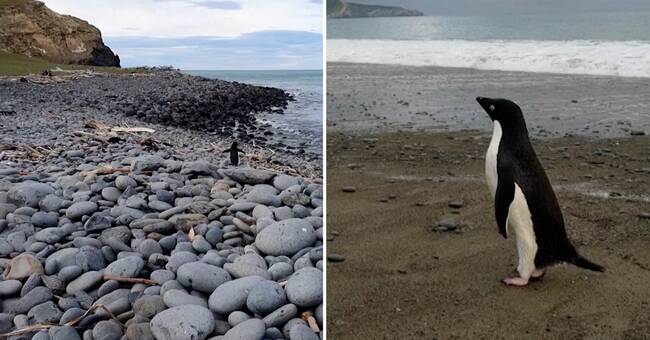The penguin, which has been named Pingu by the locals, was malnourished and severely dehydrated when it was found.
It has since been given liquid and fed via a probe before being released back into the wild.
How or why Pingu got to New Zealand is unclear but this is not the first time adélie penguins have been seen off the coast of New Zealand.
Two such "rare vagabonds" have come to the country before, in 1993 and 1962.
Zoologist Philip Seddon says that the penguin may have been caught in sea currents that brought it far from home, but does not draw any other conclusions from the rare visit.
- If we start to see adélie penguins arrive every year, we can conclude that something in the sea has changed, he says to The Guardian.
Warmer water a problem
Global warming has had different consequences for penguins in different parts of Antarctica.
In some places the sea ice grows to itself, while in other places it shrinks.
However, Nasa estimates that the population of noble penguins will decrease until the turn of the century.
In New Zealand, the warming of surface water has made it more difficult for local penguins to find food because the fish seek out deeper and colder waters, writes The Guardian.

